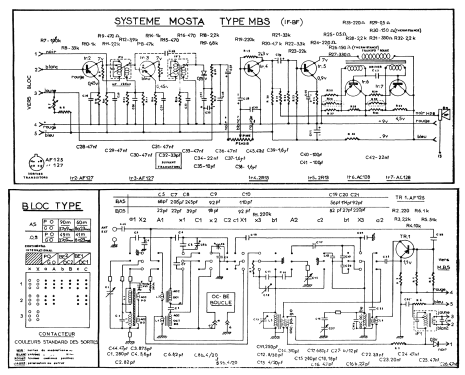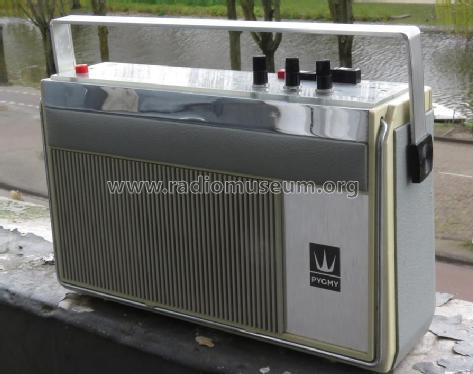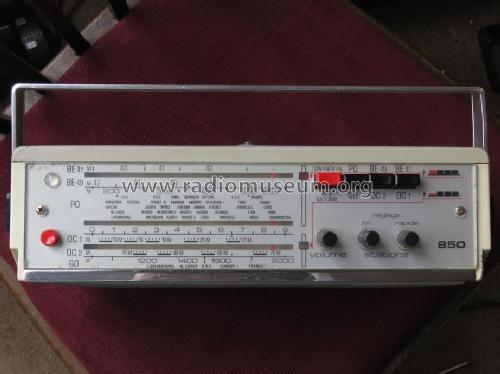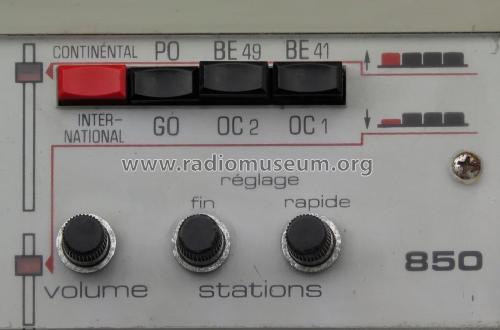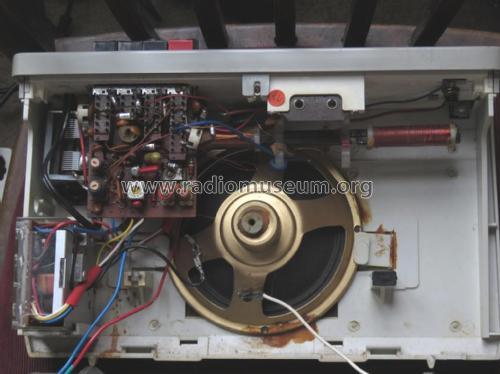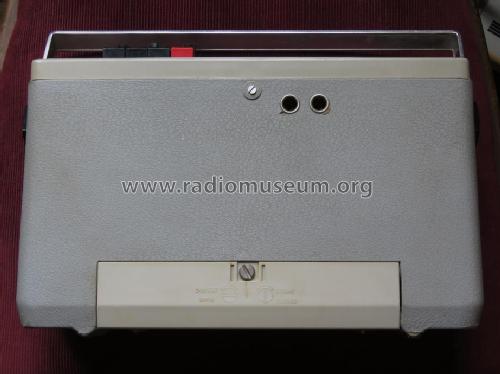- Country
- France
- Manufacturer / Brand
- Pygmy, Ciate-Pygmy (SCIP, CIATE); Paris, La Plaine St. Denis, La Courneuve
- Year
- 1966 ?
- Category
- Broadcast Receiver - or past WW2 Tuner
- Radiomuseum.org ID
- 319686
Click on the schematic thumbnail to request the schematic as a free document.
- Number of Transistors
- 7
- Main principle
- Superheterodyne (common); ZF/IF 480 kHz
- Wave bands
- Broadcast, Long Wave and more than two Short Wave bands.
- Power type and voltage
- Dry Batteries / 6 x 1.5 Volt
- Loudspeaker
- Permanent Magnet Dynamic (PDyn) Loudspeaker (moving coil) / Ø 12 cm = 4.7 inch
- Power out
- 1 W (unknown quality)
- Material
- Plastics (no bakelite or catalin)
- from Radiomuseum.org
- Model: 850 OS - Pygmy, Ciate-Pygmy SCIP, CIATE
- Shape
- Portable set > 8 inch (also usable without mains)
- Dimensions (WHD)
- 300 x 200 x 90 mm / 11.8 x 7.9 x 3.5 inch
- Notes
-
6 gammes d'ondes : PO, GO, OC1 de 13 à 31 m, OC2 de 41 à 75 m, et 2 bandes étalées (BE) sur 41 et sur 49 m.
Coffret matière plastique gainé.
6 Bänder: LW, MW, 4 x KW: 49 m Band, 41 m Band, 13 - 31 m, 41 - 75 m.
4 Drucktasten, rote Taste schaltet 2 Bänke von je 3 Wellenbereichen, genannt 'Continental' und 'International', siehe Detailfoto.
Roter Knopf für Skalenbeleuchtung / KW-Lupe / KW Rahmenantenne aufklappbar / Aussenanschlüsse für Erde und Antenne.
- Net weight (2.2 lb = 1 kg)
- 2.1 kg / 4 lb 10 oz (4.626 lb)
- Mentioned in
- Pygmy, Une grande marque pour des petits postes. (Fiche No. 44, page 174)
- Literature/Schematics (1)
- -- Schematic
- Author
- Model page created by Bruce Cohen. See "Data change" for further contributors.
- Other Models
-
Here you find 125 models, 93 with images and 34 with schematics for wireless sets etc. In French: TSF for Télégraphie sans fil.
All listed radios etc. from Pygmy, Ciate-Pygmy (SCIP, CIATE); Paris, La Plaine St. Denis, La Courneuve
Forum contributions about this model: Pygmy, Ciate-Pygmy: 850 OS
Threads: 1 | Posts: 1
Was tut ein Radiohersteller, der ein Radio mit 6 Wellenbereichen auf den Markt bringen will, aber nur einen Tastensatz von 4 Tasten zur Verfügung hat? - Er macht die erste Taste rot. Diese rote Taste schaltet 2 x 3 Bänder, sodass jeder der drei schwarzen Tasten jetzt also mit zwei Wellenbereichen belegt ist.
Die eine Bank nennt er daraufhin Continéntal, die andere International. Nun denn, so wird also Kontinental die Mittelwelle, das gespreizte 49m Band und das gespreizte 41m Band. International wird Langwelle, der Bereich von 41 – 75 m, und der Bereich von 13 – 31 m.
Gewöhnungsbedürftig, sicherlich. Wenn man es endlich begriffen hat, funktioniert’s tatsächlich.
Das Gerät ist etwas ‚klapperig‘ in Konstruktion und Ausführung. Die Kurzwelle wäre unbrauchbar ohne die KW-Lupe, wegen dem mechanisch unpräzisen Aufbau der Hauptabstimmung.
Bruce Cohen, 05.Apr.20
